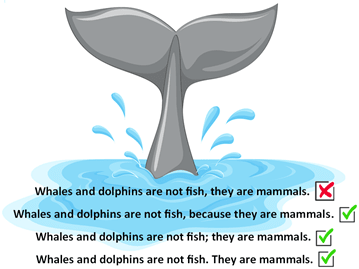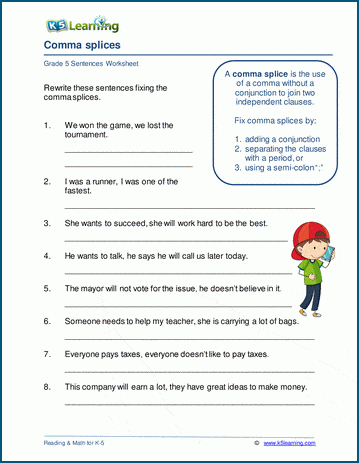In grade 5, students learn to correct run-on sentences and comma splices. We previously wrote about run-on sentences, so today we’ll tackle comma splices.
What are comma splices?
When you join two sentences (or independent clauses) with a comma and no conjunction (such as and, but, if), it’s called a comma splice.

For example:
Whales and dolphins are not fish, they are mammals.
If we look at the above sentence in more detail, you’ll be able to tell it’s a comma splice.
Let’s look at the first part.
Whales and dolphins are not fish
This is a complete sentence.
Let’s look at the rest of the example sentence:
They are mammals.
That is also a complete sentence.
We have two complete sentences. They cannot be combined into one sentence with just a comma.
Some ways to correct comma splices
There are many ways in which you can fix the comma splice.
1. You can add a conjunction to the sentence.
For example:Whales and dolphins are not fish, because they are mammals.
2. You can change the comma to a semicolon. Whales and dolphins are not fish; they are mammals.
3. You can write them as separate sentences. Whales and dolphins are not fish. They are mammals.
Grade 5 worksheets to practice fixing comma splices
In our grade 5 grammar section we have a series of worksheets to practice correcting comma splices.


